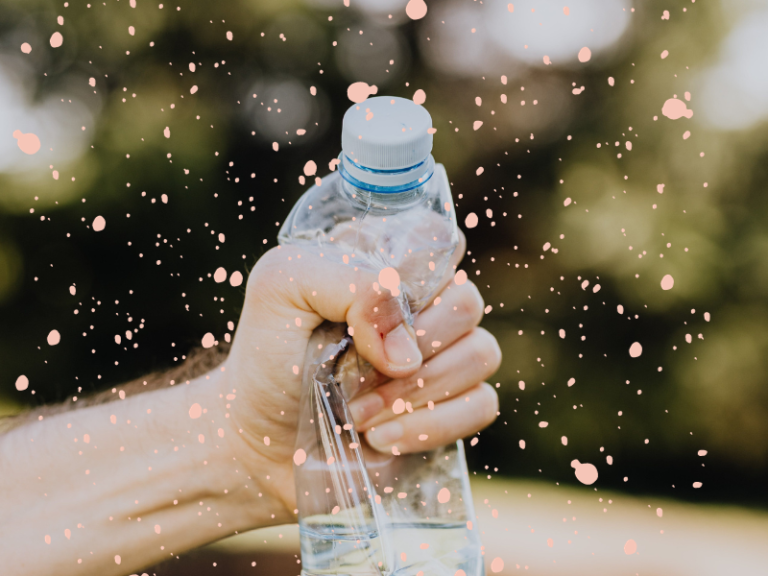Contents
- 1 Introduction to Plastic Use Disadvantages :
- 2 1. The Pervasive Problem
- 2.1 1. Health Hazards
- 2.2 3. Marine Life Menace
- 2.3 4. Non-Biodegradable Nightmare of Plastic Use Disadvantages
- 2.4 5. Microplastics: Tiny Troublemakers
- 2.5 6. Fossil Fuel Connection
- 2.6 7. Economic Impact
- 2.7 8. Recycling Quandaries of Plastic Use Disadvantages
- 2.8 9. Disrupting Ecosystems
- 2.9 10. Aesthetic and Visual Blight
- 2.10 The Pervasive Problem
- 2.11 Health Hazards
- 2.12 Marine Life Menace
- 2.13 Non-Biodegradable Nightmare
- 2.14 Microplastics: Tiny Troublemakers
- 2.15 Fossil Fuel Connection
- 2.16 Economic Impact
- 2.17 Recycling Quandaries
- 2.18 Disrupting Ecosystems
- 2.19 Aesthetic and Visual Blight
- 3 Conclusion
- 4 FAQs on Plastic Use Disadvantages
Introduction to Plastic Use Disadvantages :
Plastic has become an integral part of our daily lives in a world driven by convenience. From packaging to household items, it’s hard to imagine a day without encountering this versatile material., there are many Plastic Use Disadvantages However, as we revel in its convenience, it’s crucial to acknowledge the darker side of plastic use. Let’s dive into the top 10 disadvantages that come with our dependency on plastic, exploring the environmental and health impacts that often go unnoticed.
1. The Pervasive Problem
Plastic, often seen as a symbol of convenience, has silently crept into every aspect of our lives. But is this convenience costing us more than we realize? Let’s unravel the intricate web of plastic use disadvantages.
1. Health Hazards
Health Risks
Could our health be at risk without us realizing it? Studies suggest potential health hazards linked to plastic particles contaminating our food and water. Phthalates and bisphenol A (BPA), commonly present in plastics, are associated with hormonal disruptions, raising concerns about unintended health consequences.
3. Marine Life Menace
Our oceans are drowning in plastic, severely threatening marine life. From entanglement in plastic debris to ingestion, marine creatures face a grim fate. It’s time to question the real cost of our disposable lifestyle.
4. Non-Biodegradable Nightmare of Plastic Use Disadvantages
The permanence of plastic is a curse. Unlike organic materials, it doesn’t break down naturally, accumulating in our ecosystems. It’s high time we rethink the consequences of using a material that refuses to disappear.
5. Microplastics: Tiny Troublemakers
The unseen danger in plain sight. Microplastics, minuscule particles resulting from breakdown, infiltrate our water, air, and even the food we consume. How is this microscopic threat impacting our well-being?
6. Fossil Fuel Connection
Unveiling the fossil fuel link. The production of plastic is heavily reliant on fossil fuels, contributing to our dependence on non-renewable resources. How does this connection exacerbate environmental issues?
7. Economic Impact
Is our love for plastic harming our economy?
Dealing with plastic waste incurs substantial costs for communities. From cleanup initiatives to healthcare expenses, the economic burden is undeniable.
8. Recycling Quandaries of Plastic Use Disadvantages
Is recycling the silver bullet we believe it to be?
Despite recycling efforts, a significant portion of plastic remains unrecyclable, ending up in landfills or incinerators. Are we stuck in a loop of false sustainability?
9. Disrupting Ecosystems
Beyond the visible impact. Plastic pollution disrupts ecosystems, affecting the delicate balance of flora and fauna. How does this disruption echo through the intricate tapestry of our environment?
10. Aesthetic and Visual Blight
The ugly side of convenience. Plastic waste mars the beauty of our surroundings, turning landscapes into eyesores. What is the aesthetic cost of sacrificing our environment for momentary ease?
-
The Pervasive Problem
Plastic, often considered a symbol of convenience, has quietly infiltrated every facet of our lives. But could this convenience be costing us more than we realize? Let’s unravel the intricate web of disadvantages associated with plastic use.
-
Health Hazards
Could our health be in jeopardy without us even knowing it? Studies suggest potential health risks linked to plastic particles contaminating our food and water. Phthalates and bisphenol A (BPA), commonly found in plastics, have been associated with hormonal disruptions, raising concerns about unintended health consequences.
-
Marine Life Menace
Our oceans are drowning in plastic, severely threatening marine life. From entanglement in plastic debris to ingestion, marine creatures face a grim fate. It’s time to question the real cost of our disposable lifestyle.
-
Non-Biodegradable Nightmare
The durability of plastic is a curse. Unlike organic materials, plastic doesn’t break down naturally, accumulating in our ecosystems. It’s high time we reevaluate the consequences of using a material that refuses to disappear.
-
Microplastics: Tiny Troublemakers
The unseen danger in plain sight. Microplastics, minuscule particles resulting from plastic breakdown, infiltrate our water, air, and even the food we consume. How is this microscopic threat impacting our well-being?
-
Fossil Fuel Connection
Revealing the link to fossil fuels. The production of plastic heavily relies on fossil fuels, contributing to our dependence on non-renewable resources. How does this connection exacerbate environmental issues?
-
Economic Impact
Is our affection for plastic harming our economy? Dealing with plastic waste incurs substantial costs for communities, from cleanup initiatives to healthcare expenses. The economic burden is undeniable.
-
Recycling Quandaries
Is recycling the silver bullet we believe it to be? Despite recycling efforts, a significant portion of plastic remains unrecyclable, ending up in landfills or incinerators. Are we trapped in a cycle of false sustainability?
-
Disrupting Ecosystems
Beyond the visible impact. Plastic pollution disrupts ecosystems, affecting the delicate balance of flora and fauna. How does this disruption reverberate through the intricate tapestry of our environment?
-
Aesthetic and Visual Blight
The unsightly side of convenience. Plastic waste mars the beauty of our surroundings, turning landscapes into eyesores. What is the aesthetic cost of sacrificing our environment for momentary ease?
Conclusion
As we navigate the convenience-driven era, it’s crucial to acknowledge the detrimental effects of our reliance on Plastic Use Disadvantages. The environmental, health, and economic consequences demand our attention. Embracing sustainable alternatives and reevaluating our relationship with plastic is not just an option but a necessity for a healthier, cleaner future.
FAQs on Plastic Use Disadvantages
1. Is plastic truly harmful to the environment?
Plastic poses a severe threat to the environment. Its non-biodegradable nature and extensive use contribute significantly to pollution in land, water, and air.
2. How does it impact marine life?
Plastic poses a substantial threat to marine life through ingestion and entanglement. The toxic chemicals present in plastic further jeopardize the health of aquatic ecosystems.
15 effective Morning Habits of successful people : Mastering Success





